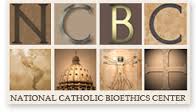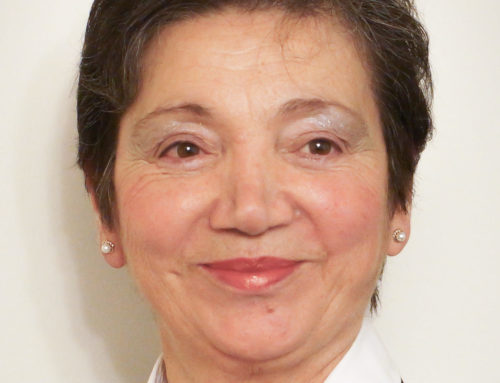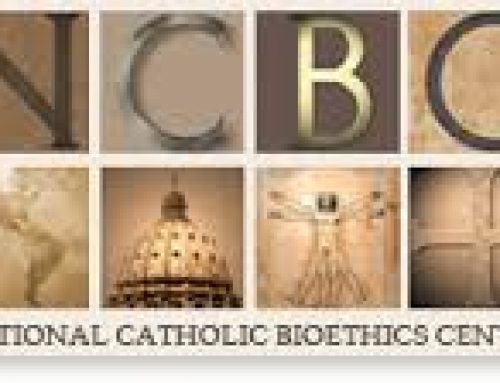Messages from Our President and President Emeritus RSS

Human embryos are living beings and yet some scientists, politicians, ethicists, and even theologians have fallen into the rhetorical trap of speaking about their “destruction” rather than their being killed. Logic and correct use of language tell us one does not kill a car, one destroys inanimate objects. One kills rather than destroys an oak tree, an animal, or any living being. Only after living creatures have died or been killed can their inanimate bodies be destroyed.
So why is the misleading language of “embryo destructive research” used so often? I believe it was originally conceived to dehumanize human embryos, and by using deceptive language, justify treating them like objects. A consistent feature of massive crimes and injustices done to different groups throughout history is speaking of the victims as less than human. The most flagrant and similar example in American history was the legal definition of African slaves as property and not persons. The in vitro fertilization (IVF) clinic in Alabama, when sued for the wrongful death of the frozen embryos of several couples, argued that their tiny children, their embryos, did not deserve the protection of the law in the same way that a pregnant mother’s preborn baby does.
I am reminded of a popular children’s story, Horton Hears a Who! The main character, an elephant, repeatedly pronounces a memorable phrase. “A person’s a person, no matter how small.” The human embryo is created by the fusion of the DNA from a sperm and an egg cell contributed by his or her father and mother. From that one cell, with a unique human genetic code, a new human begins to exist. The most vulnerable and defenseless human being is that tiny embryo who desperately needs his or her mother’s body to mature until old enough to be born and enter the exterior world.
How is it just or even logical to recognize human rights only for human beings of a certain size or because they live in a more privileged location than another?
Rather than following scientific facts and logic, emotion and feelings seem to be dominating the in vitro fertilization debate. A protestor in Alabama held up a sign that proclaimed, “You can’t cuddle an embryo.” Some have their judgment clouded by the pain and longing of infertility. Deep down they know that these embryos are human and alive and need only maternal care and nourishment to grow like we all have. Nevertheless, many are willing to sacrifice large numbers of embryos for the possibility of a baby in their arms to cuddle and love.
My wife and I suffered from infertility for over eight years. The pain and longing of infertility are real crosses. The response to infertility, however, must be compassionate and truthful. The rights and dignity of the couple who want to become parents and their children must be respected. IVF involves a series of lies. The first is that it is a treatment for infertility. Instead of healing the medical conditions keeping the couple childless, IVF bypasses their infertility by conceiving new human lives in a laboratory, sometimes with sperm or eggs that come from third parties. Then, immediately after bringing about new lives in the most coldly scientific way possible, the new embryos are treated as objects subject to quality control. The slightest evidence or suspicion of defects or genetic anomalies are a death sentence for IVF conceived embryos who are routinely discarded and thrown in the trash.
In condemning IVF, starting with the instruction Donum Vitae, the Church insists that children are a gift from God, the supreme gift of marriage where the loving action of the husband and wife can result in the blessing of a new creation. IVF completely replaces the conjugal act of the couple with laboratory techniques and transforms a baby from being a gift into a product that is frequently “mass produced” so that only the “best ones” can be selected for a slim chance at survival.
Make no mistake about it, IVF is terrible medicine. Despite a high cost both in money and hormonal manipulation of the woman, most who embark on the IVF journey do not end up with a living child. They do, however, have the guilt of knowing that many new lives were conceived and killed in the lab, put in frozen storage indefinitely or died from mortality in thawing, failing to implant in the womb, or dying in an early miscarriage. It is standard practice to transfer two, three, or more embryos at a time hoping that just one will survive and go to term. If more than one implants and grows, or a fetus is diagnosed with an illness, then it is also common for IVF practitioners to push for “pregnancy reductions” or selective abortions to deliver only the promised product of a single healthy baby.
IVF is the opposite of a loving response to infertility. IVF involves the killing and sacrificing of many embryos for the birth of just one healthy baby. That is why the IVF industry desperately wants everyone to use their preferred terminology of “destroying” rather than killing human embryos.
Joseph Meaney became president of the NCBC in 2019. He received his PhD in bioethics from the Catholic University of the Sacred Heart in Rome; his dissertation topic was Conscience and Health Care: A Bioethical Analysis. Dr. Meaney earned his master’s in Latin American studies, focusing on health care in Guatemala, from the University of Texas at Austin. His bachelor’s degree was in history from the University of Dallas. Dr. Meaney was director of international outreach and expansion for Human Life International (HLI) and is a leading expert on the international pro-life and family movement, having traveled to eighty-one countries on pro-life missions. He founded the Rome office of HLI in 1998 and lived in Rome for nine years, where he collaborated closely with dicasteries of the Holy See, particularly the Pontifical Council for the Family and the Pontifical Academy for Life. He is a dual US and French citizen and is fluent in French, Spanish, Italian, and English. His family has been active in the health care and pro-life fields in Corpus Christi, Texas, and in France for many years.








